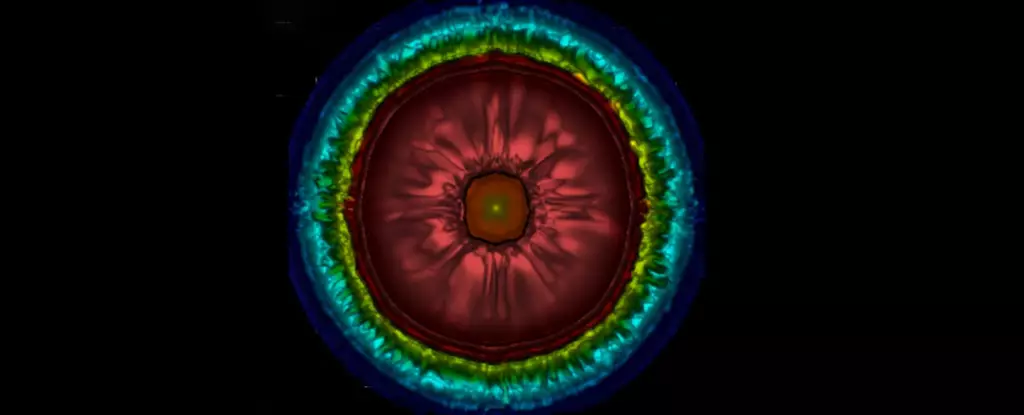The grand finale of a massive star’s life is marked by a spectacular event called a supernova. When these colossal stars exhaust their fuel, they detonate in a cataclysmic explosion. However, the mechanics underlying such phenomena, particularly exotic supernovae, remain shrouded in mystery. Exotic supernovae represent the rarest and brightest forms of stellar explosions, challenging the existing understanding of supernova physics. To shed light on the dynamics of these peculiar events, astronomers have turned to the immense power of supercomputers. Through a groundbreaking effort, an international team of researchers has successfully created the first-ever high-definition, three-dimensional hydrodynamic simulation of exotic supernovae, providing invaluable insights into their nature and behavior.
Supernovae are not unfamiliar territory for astronomers, as they have acquired a comprehensive understanding of these stellar explosions over the years. Through computer modeling, scientists have been able to decode the intricate processes underlying a typical supernova explosion. However, recent observations have uncovered exotic supernovae that challenge the established norms. These exceptional events, characterized by intense luminosity or prolonged duration, defy conventional wisdom. The enigma deepened further when researchers discovered exotic supernovae exhibiting irregular fluctuations in brightness. It is believed that stars with masses ranging from 80 to 140 times that of the Sun give birth to these extraordinary phenomena. Delving into the unknown, astronomers have embarked on a quest to comprehend these elusive events, recognizing their pivotal role in unraveling the mysteries of the universe.
Unlocking the secrets of exotic supernovae necessitates harnessing the immense computational power provided by cutting-edge supercomputers. The team, led by Ke-Jung Chen from the Academia Sinica Institute of Astronomy and Astrophysics (ASIAA) in Taiwan, collaborated with the Lawrence Berkeley National Laboratory and the National Astronomical Observatory of Japan. They embarked on an ambitious endeavor, employing state-of-the-art supercomputer simulations to replicate the turbulent structures within an exotic supernova explosion. Unlike previous models, which were limited to one-dimensional simulations, this groundbreaking approach allowed the researchers to explore the impact of turbulent structures on the overall brightness and structure of the supernova. These structures, formed by chaotic fluid motion, exert a profound influence on the release and transfer of energy, ultimately shaping the appearance of the resulting explosion.
The findings from this groundbreaking study have profound implications for the future of supernova research. By shedding light on the turbulent dynamics within an exotic supernova, scientists hope to uncover the key to understanding the evolution of the most massive stars in the universe. The team acknowledges that further research is necessary to fully comprehend the intricacies of these rare events. They argue that upcoming projects, such as the Vera Rubin Telescope in Chile and space missions like the Nancy Grace Roman Space Telescope and Euclid, will likely detect an increased number of exotic supernovae. Consequently, the insights gained from computer simulations and modeling will play a critical role in expanding our knowledge of the demise of massive stars.
As the first high-definition, three-dimensional hydrodynamic simulation of exotic supernovae, this groundbreaking study serves as a stepping stone in our ongoing quest to uncover the mysteries of the universe. By leveraging the power of supercomputers, astronomers have taken a significant leap forward in unraveling the enigmatic nature of these rare stellar explosions. The tantalizing insights gleaned from this research pave the way for further exploration and understanding of exotic supernovae. As new observations continue to expand our cosmic narrative, scientists stand poised to decipher the secrets held within the depth of the universe.



Leave a Reply